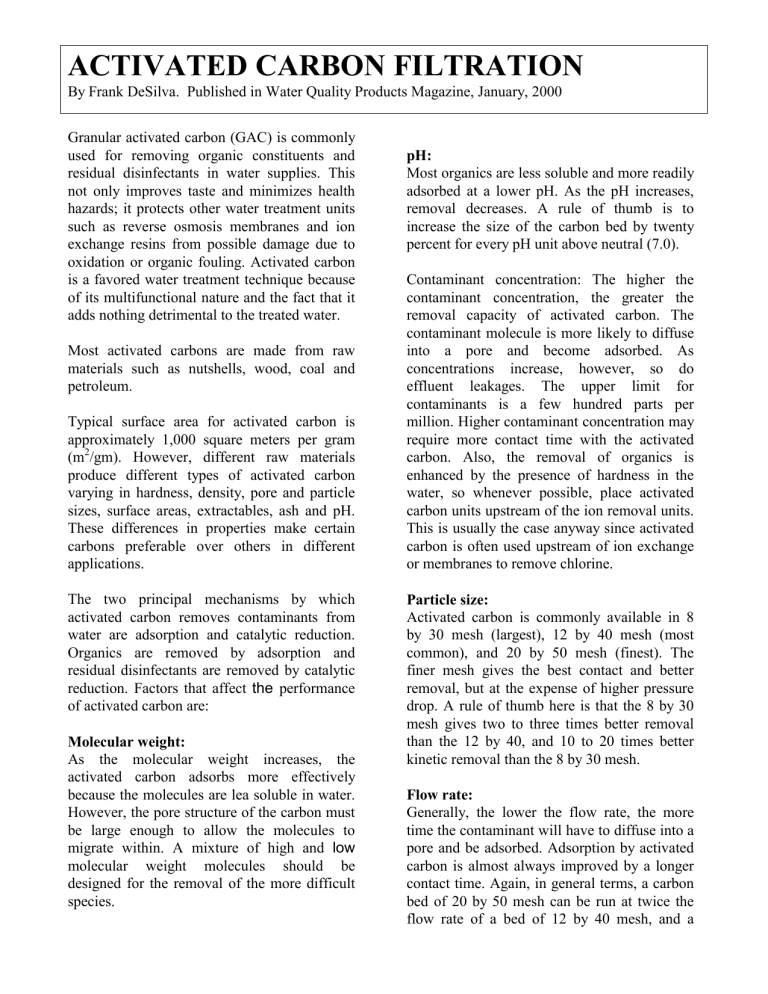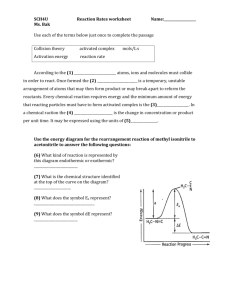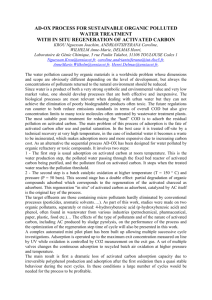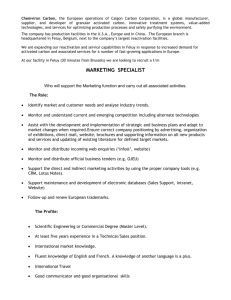
ACTIVATED CARBON FILTRATION By Frank DeSilva. Published in Water Quality Products Magazine, January, 2000 Granular activated carbon (GAC) is commonly used for removing organic constituents and residual disinfectants in water supplies. This not only improves taste and minimizes health hazards; it protects other water treatment units such as reverse osmosis membranes and ion exchange resins from possible damage due to oxidation or organic fouling. Activated carbon is a favored water treatment technique because of its multifunctional nature and the fact that it adds nothing detrimental to the treated water. Most activated carbons are made from raw materials such as nutshells, wood, coal and petroleum. Typical surface area for activated carbon is approximately 1,000 square meters per gram (m2/gm). However, different raw materials produce different types of activated carbon varying in hardness, density, pore and particle sizes, surface areas, extractables, ash and pH. These differences in properties make certain carbons preferable over others in different applications. The two principal mechanisms by which activated carbon removes contaminants from water are adsorption and catalytic reduction. Organics are removed by adsorption and residual disinfectants are removed by catalytic reduction. Factors that affect the performance of activated carbon are: Molecular weight: As the molecular weight increases, the activated carbon adsorbs more effectively because the molecules are lea soluble in water. However, the pore structure of the carbon must be large enough to allow the molecules to migrate within. A mixture of high and low molecular weight molecules should be designed for the removal of the more difficult species. pH: Most organics are less soluble and more readily adsorbed at a lower pH. As the pH increases, removal decreases. A rule of thumb is to increase the size of the carbon bed by twenty percent for every pH unit above neutral (7.0). Contaminant concentration: The higher the contaminant concentration, the greater the removal capacity of activated carbon. The contaminant molecule is more likely to diffuse into a pore and become adsorbed. As concentrations increase, however, so do effluent leakages. The upper limit for contaminants is a few hundred parts per million. Higher contaminant concentration may require more contact time with the activated carbon. Also, the removal of organics is enhanced by the presence of hardness in the water, so whenever possible, place activated carbon units upstream of the ion removal units. This is usually the case anyway since activated carbon is often used upstream of ion exchange or membranes to remove chlorine. Particle size: Activated carbon is commonly available in 8 by 30 mesh (largest), 12 by 40 mesh (most common), and 20 by 50 mesh (finest). The finer mesh gives the best contact and better removal, but at the expense of higher pressure drop. A rule of thumb here is that the 8 by 30 mesh gives two to three times better removal than the 12 by 40, and 10 to 20 times better kinetic removal than the 8 by 30 mesh. Flow rate: Generally, the lower the flow rate, the more time the contaminant will have to diffuse into a pore and be adsorbed. Adsorption by activated carbon is almost always improved by a longer contact time. Again, in general terms, a carbon bed of 20 by 50 mesh can be run at twice the flow rate of a bed of 12 by 40 mesh, and a carbon bed of 12 by 40 mesh can be run at twice the flow rate of a bed of 8 by 30 mesh. Whenever considering higher flow rates with finer mesh carbons, watch for an increased pressure drop! Temperature: Higher water temperatures decrease the solution viscosity and can increase die diffusion rate, thereby increasing adsorption. Higher temperatures can also disrupt the adsorptive bond and slightly decrease adsorption. It depends on the organic compound being removed, but generally, lower temperatures seem to favor adsorption. Organic Removal Organic material in public water supplies comes from decaying plant life, which becomes more soluble in water over time and exists as large, high-molecular weight organic acids (non-polar weak acids). Eventually, smaller molecular weight acids of varying sizes form. Typical organic acid molecules range in molecular weight from a few hundred to tens of thousands. The size, number and chemical structure of organic acid molecules depend on a large number of factors, including water pH and temperature. Accordingly, there exists an almost infinite number of organic acids. As a result, removing organics can be difficult and is always site-specific. Activated carbon's adsorptive properties are used to remove organics. Generally, adsorption takes place because all molecules exert forces to adhere to each other. Activated carbon adsorbs organic material because the attractive forces between the carbon surface (non-polar) and the contaminant (non-polar) are stronger than the forces keeping the contaminant dissolved in water (polar). The adsorptive forces arc weak and cannot occur unless the organic molecules are close to the carbon's surface. The large surface am of the activated carbon, due to its particle size and pore configuration, allows for the adsorption to take place. Factors that decrease solubility and/or increase accessibility to the pores improve the performance of the activated carbon filter. Carbon filter capacity can be roughly estimated at 0. 1 pound of organics per I pound of carbon at a flow rate of I to 2 gallons per minute per cubic foot (gpm/cu.ft.) and a bed depth of 3 feet. Residual disinfectants removal Activated carbon can remove and destroy residual disinfectants (chlorine and chloramine) through a catalytic reduction reaction. This is a chemical reaction that involves a transfer of electrons from the activated carbon surface to the residual disinfectant. In other words, activated carbon acts as a reducing agent. Activated carbon's removal of chlorine reduces the chlorine to a non-oxidative chloride ion. The reaction is very fast and takes place in the first few inches of a new activated carbon bed. (Where removal of organics by activated carbon takes minutes, removal of chlorine literally takes seconds). The chlorine capacity of new activated carbon is I pound of chlorine per pound of carbon at a flow rate of 3 to 5 gpm/cu.ft. and a bed depth of 3 feet. Chloramine removal by activated carbon is a much slower reaction. The predominant species of chloramine in city water supplies (pH about 7 to 8) is monochloramine. The reaction with activated carbon and monochloramine also renders a non-oxidative chloride ion. Since die rate of reaction is considerably slower, the flow rate should be 0.5 gpm/cu.ft. and the bed depth greater than 3 feet. Material considerations Activated carbon beds are filters and need to be backwashed periodically. A freeboard of about 50 percent should be incorporated into the vessel design to allow backwash inplace. Otherwise, external backwash is required. The backwash step does not "regenerate' the carbon or de-adsorb contaminants. 'Me backwash step reclassifies the bed and removes any fines or suspended matter. Carbon fines are generated during transport, handling and loading of activated carbon. These fines need to be backwashed out before service. Pre-wetted and backwashed carbons are available that minimize the fines and also eliminate the problems mused by carbon dust in a facility, Loading carbon tanks with dry carbon is a messy, hazardous job. Using pre-wetted carbon eliminates the airborne dust and makes for a clean plant environment. GAC System Design Parameters Chlorine Chloramine Organics 1-3 0.5 1-2 2-3 6 3-5 Almost indefinite 2 - 6 weeks 1 - 6 months Flow rate (gpm/ft.1) Minimum bed depth (ft.) Bed life Typical Properties of Granulated Activated Carbon Bituminous Subbituminous 1,000 1,100 800-900 600 1,000 Molasses number 235 230 300 0 Abrasion number 80-90 75 60 97 Bulk density as 26-28 25-26 23 29-30 26,000 25,000 13,800 0 Iodine number Processed grades of activated carbon are available that include medical/pharmaceutical grades, electroplating grades, and powdered or pelletized carbons. Lignite Nut she packed LB/CF Activated carbon is a proven technology for the removal of naturally occurring organics and residual disinfectants. Designing an activated carbon filtration system needs to take into account the differences in the water to be treated, the type of activated carbon used, and the effluent quality and operating parameters. ADDITIONAL READING: Cooney, David O., Adsorption Design for Wastewater Treatment, Lewis Publishers, Boca Raton, FL (1999) McGowan, Wes, Residential Water Processing, Water Quality Association, Lisle, IL (1997) Meltzer, Theodore H., High Purity Water Preparation, Tall Oaks Publishing, Littleton, CO (1993) Volume activity Iodine and molasses numbers measure pore size distributio Iodine number is a relative measure of pores at sizes of 10 to 2 Angstroms. It is reported in milligrams of elemental iodin adsorbed per gram of GAC and determines the area available on th GAC to adsorb low molecular weight organics. Molasses number measures the degree a GAC removes color from a stock solution. It measures pores greater than 28 Angstroms. These are the pores responsible for removing larger molecular weight organics such as tannins. Abrasion numbers represent the relative degree of particle size reduction after tumbling with a harder material. No reduction is rated 100, complete pulverization is zero.




